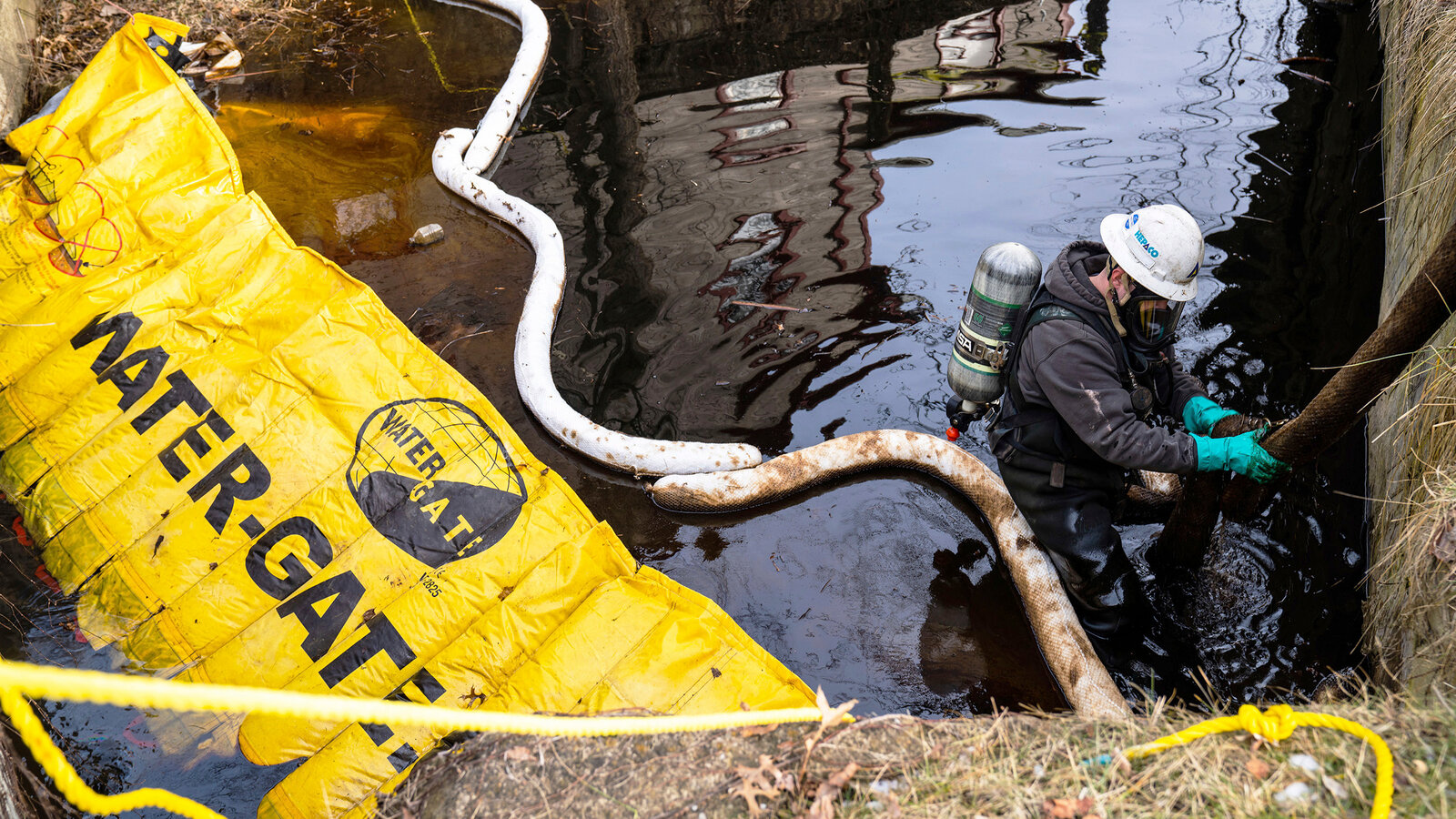Long-Term Impact Of Ohio Train Derailment: Toxic Chemical Residues In Buildings

Table of Contents
Types of Toxic Chemicals and Their Persistence
The derailment released a cocktail of hazardous materials, many of which are known to persist in the environment and potentially within building structures. Understanding the properties of these chemicals is crucial to assessing the long-term risks.
Vinyl Chloride: A Persistent Threat
Vinyl chloride, a known carcinogen, is particularly concerning due to its volatility and ability to permeate porous materials. Its vapor can infiltrate building materials like carpet, drywall, insulation, and even wood, leaving behind potentially harmful residues long after the initial release. Exposure to vinyl chloride is linked to a range of health problems, including liver cancer, brain cancer, and leukemia. The long-term effects of low-level exposure to vinyl chloride are still being researched, highlighting the need for comprehensive testing.
Other Chemicals Released: A Complex Mixture
Beyond vinyl chloride, the derailment released other hazardous substances, including butyl acrylate, ethylene glycol monobutyl ether, and various other chemicals. These chemicals, though potentially less volatile than vinyl chloride, can still contaminate building materials through different pathways, leading to long-term health risks.
- Butyl acrylate: A highly reactive chemical that can cause skin and eye irritation, as well as respiratory problems. It can be absorbed through the skin and inhaled, leading to potential long-term health issues.
- Ethylene glycol monobutyl ether: A solvent with potential reproductive and developmental toxicity. Its persistence in building materials requires further investigation.
- Other chemicals: The exact composition of the released chemicals is still under investigation, making a complete assessment of long-term risks challenging.
Pathways of Contamination
The toxic chemicals released in the derailment can contaminate buildings through multiple pathways:
Airborne Dispersion: Settling of Toxic Particles
Airborne particles containing the released chemicals can travel considerable distances and settle within buildings, particularly through open windows or ventilation systems. These particles can adhere to surfaces and remain a source of exposure for extended periods. The smaller the particle size, the more likely it is to penetrate deep within building materials.
Water Contamination: Leaching into Structures
Contaminated water sources, whether groundwater or surface water, can leach into building foundations and basements, carrying dissolved chemicals into building materials. This pathway is especially relevant for chemicals that are soluble in water. Testing water sources near affected buildings is crucial to understanding this pathway.
Soil Contamination: Upward Migration
Contaminated soil surrounding buildings can act as a reservoir for hazardous chemicals. These chemicals can migrate upwards, contaminating building foundations, basements, and potentially even the interior spaces through cracks or other openings.
Health Risks Associated with Long-Term Exposure
Long-term exposure to the toxic chemical residues from the Ohio train derailment poses serious health risks to residents:
Respiratory Problems: Ongoing Inhalation Risks
Inhalation of lingering chemical vapors can lead to a range of respiratory problems, including chronic bronchitis, asthma, and other lung conditions. The severity of these effects depends on the specific chemicals, the concentration of exposure, and the individual's susceptibility.
Neurological Effects: Long-Term Brain Damage
Some of the released chemicals can cause neurological damage, leading to cognitive impairment, headaches, dizziness, and other neurological symptoms. Long-term effects can be debilitating.
Cancer Risks: Increased Carcinogenic Potential
Exposure to carcinogens like vinyl chloride significantly increases the risk of various cancers, potentially many years after exposure. The long-term health monitoring of residents in affected areas is critically important.
Testing and Remediation Strategies
Addressing the long-term impact of toxic chemical residues requires a comprehensive strategy focused on testing and remediation:
Importance of Building Testing: A Crucial First Step
Thorough testing of buildings in the affected areas is essential to identify the presence and concentration of toxic chemicals. This involves sampling various building materials (air, dust, water, soil, and building materials themselves) and analyzing them for the presence of specific chemicals.
Remediation Techniques: Removing the Threat
Remediation techniques can range from simple air filtration and surface decontamination to more extensive measures, such as the demolition and reconstruction of severely contaminated buildings. The choice of method depends on the extent and nature of contamination.
Role of Government Agencies and Private Contractors: Collaboration is Key
Government agencies, such as the EPA and state environmental agencies, play a vital role in coordinating testing and remediation efforts. Private contractors often carry out the actual testing and remediation work. Collaboration between all involved parties is crucial.
Conclusion
The long-term impact of the Ohio train derailment on buildings contaminated with toxic chemical residues presents a significant public health and environmental challenge. The presence of persistent chemicals like vinyl chloride poses serious health risks, including respiratory problems, neurological damage, and cancer. Comprehensive testing and effective remediation strategies are crucial to mitigate these risks and ensure the safety of residents. Stay informed, advocate for thorough testing and remediation efforts in your community, and seek further information from the EPA and other relevant agencies regarding the long-term effects of toxic chemical residues in buildings resulting from the Ohio train derailment. Understanding the potential for toxic chemical residues in buildings is crucial to safeguarding public health and promoting environmental justice. Learn more about the ongoing investigations and remediation efforts by visiting the EPA website and other credible resources.

Featured Posts
-
 Multiple Fatalities In After School Camp Car Accident
Apr 30, 2025
Multiple Fatalities In After School Camp Car Accident
Apr 30, 2025 -
 How To Watch Cavaliers Vs Heat Nba Playoffs Game 2 Time Tv Channel And Live Stream Options
Apr 30, 2025
How To Watch Cavaliers Vs Heat Nba Playoffs Game 2 Time Tv Channel And Live Stream Options
Apr 30, 2025 -
 Our Farm Next Door The Story Of Amanda Clive And Their Children
Apr 30, 2025
Our Farm Next Door The Story Of Amanda Clive And Their Children
Apr 30, 2025 -
 Defining Middle Class Income Across The United States
Apr 30, 2025
Defining Middle Class Income Across The United States
Apr 30, 2025 -
 Analysing Remember Mondays Anti Cyberbullying Message In The Uk Eurovision Entry
Apr 30, 2025
Analysing Remember Mondays Anti Cyberbullying Message In The Uk Eurovision Entry
Apr 30, 2025
